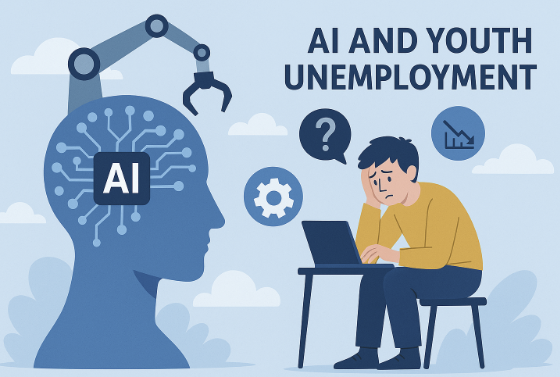
Communication in the Age of AI: Bridging Cultures and Building Connections
In the digital age, communication has undergone a radical transformation, thanks to the emergence of artificial intelligence (AI). As international students, we are living at the intersection of cultural exchange, technological advancement, and global connectivity. AI is reshaping how we interact with one another, transcending geographical borders and language barriers in order to create more inclusive, efficient, and personalized communication.
The most immediate impact of AI on communication is its ability to break down language barriers. Language translation tools powered by AI, such as Google Translate and DeepL, have revolutionized cross-cultural communication. These platforms enable students from different parts of the world to change ideas, access information, and collaborate on projects, regardless of the languages they speak. While AI translations are still not perfect, they are improving gradually and rapidly, making it easier for people to communicate in real-time with minimal misunderstanding. This is especially important in diverse educational environments, where students come from varied linguistic backgrounds.
Furthermore, AI is enhancing communication by making it more personalized and adaptive. Tools like chatbots and virtual assistants (such as Siri or Alexa) are becoming increasingly integrated into daily life, helping us manage multiple tasks, schedule appointments, and even answer questions. These systems learn from our interactions, which provides more accurate and contextually relevant responses over time. This personalization extends to academic settings, where AI can help students by offering tailored study recommendations, and even one-on-one tutoring.
However, while AI offers numerous benefits, it also presents challenges that are waiting to be overcome. One major concern is the potential loss of actual touch and face-to-face communication. AI, for all its capabilities, lacks the emotional intelligence, as its only ability is to understand and respond to questions, but it cannot fully grasp the complexities of tone, body language, and emotional context. For instance, in educational settings, an AI tutor might be able to explain a complex concept in multiple ways, but it cannot recognize a student’s frustration or joy as effectively as a human teacher can. Another concern is the ethical implications of AI in communication. AI systems are built upon data where much of that data comes from users’ personal information. This raises questions about privacy, security, and the potential for manipulation.
In conclusion, the age of AI is both an exciting and challenging time for communication. As international students, we are in a unique position to leverage AI’s capabilities to connect with peers across the globe, but we must also remain mindful of its limitations and ethical implications. The future of communication will undoubtedly be shaped by AI, but it is crucial that we, as global citizens, continue to foster human connection and empathy in this ever-evolving digital landscape.
Xingyu Chen










